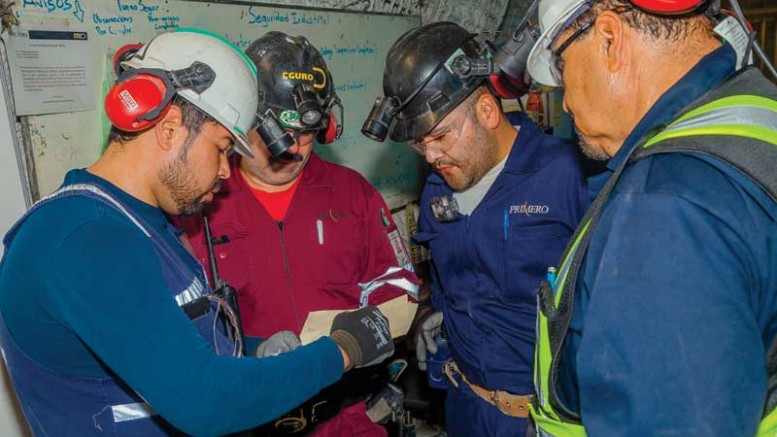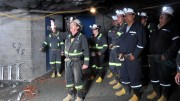What role (if any) does leadership play in safety performance? Turns out, a significant role, but first let’s define what we mean by safety performance and leadership as it relates to this topic.
Organizations serious about safety show their commitment in a variety of ways. Most use a variation of the Occupational Safety and Health Administration’s (OSHA) six-factor framework, consisting of: management and leadership; worker participation; hazard identification and assessment; hazard prevention and control; education and training; and evaluation, and continuous improvement.
As this framework is operationalized you will see a large number of practical aspects, including: a safety vision; safety listed as a core value; a safety manual; occupational health and safety committees; morning huddles and tailgate meetings; a safety moment to kick off every meeting; field-level risk assessments; safety rules, policies and procedures; training; audits and investigations; contractor involvement; rewards and consequences; metrics and KPIs; leadership presence; and ongoing discussions about how to build a safety culture to keep safety front-of-mind to avoid complacency, and raise the bar on safety performance.
Leadership
Turning our attention to leadership, we first must ask: What makes for good leadership? Casting a vision? Creating task clarity? Building strong relationships? Getting team input? Pushing a fast pace? Growing people?
Perhaps a bigger question is: Should a leader focus on only one style?
The reality is that great leaders do all of the above in the right time, place and dose.
Joint research by Harvard University and my firm Korn Ferry identified six leadership styles and the impact of leadership style on climate and results (“Leadership that gets results,” 2000).
This research showed that the style of a leader accounts for 70% of the variance in the climate between work areas, and the climate accounts for 30% of the variance in results. Clearly, the leader sets the tone.
A summary of the six leadership styles is shown below:
- Directive: “Do what I tell you to do.”
- Visionary: “Let me tell you where we’re going.”
- Affiliative: Leadership through relationship.
- Participative: “Let’s decide together.”
- Pace-setting: “Do what I do.”
- Coaching: Long-term development of others.
Our research shows that to build a culture of high performance, leaders should strive to master the full toolbox of all six leadership styles. World-class leaders have command over four or more styles (19% of leaders, globally).
Sadly, this same research shows that most leaders have command over only one style, meaning the vast majority of leaders need to learn the power of the full toolbox. A one-trick pony doesn’t cut it as a leader.
Connection between safety and leadership

Marcelin Bruneau teaching a mine safety course in 2015. Credit: Cree Human Resources Development
This 2018 analysis combined data from two sources: a 2017 safety survey ranking organizations on each of physical safety and psychological safety; and the 2017 completion of our Six Leadership Styles tool, which included data from the top-three levels of management.
In total, the data set included 26 organizations and 217 leaders, rated by a total of 1,302 workers.
We then analyzed the data for relationships between leadership style(s) and safety performance.
We saw three key findings emerge in the study:
- Organizations with the best performance on safety (either psychological or physical) were consistently the same ones whereby leaders had command over more leadership styles (averaging 4.1 leadership styles).
- Organizations with lower safety performances consistently had command over a smaller number of the six leadership styles (averaging 2.2 leadership styles).
- Different leadership styles had varying correlations to safety performance. The impact of each of the six leadership styles are shown in the table.
|
Safety |
Leadership Styles MOST
Correlated to Strong Performance |
Leadership Styles MILDLY
Correlated to Strong Performance |
Leadership Styles LEAST
Correlated to Strong Performance |
| Physical Safety | Directive
Participative Affiliative |
Visionary
Coaching |
Pacesetting |
| Psychological Safety | Participative
Affiliative Visionary |
Directive
Coaching |
Pacesetting |
The three conclusions are:
- Effective leadership is essential for effective safety performance.
- Leaders need to develop all six leadership styles. While certain leadership styles correlate more to safety performance, ALL of the styles have their time and place, reinforcing the importance of developing yourself in all six styles.
- Leaders need to be careful with pacesetting. While it has some specific benefits, much has been written about the detrimental impact of this style. High standards, working 24/7/365, fast-moving, high volume, and close-control, can be been seen as impatient, perfectionist, production trumping safety, and that nothing is ever good enough.
This research confirms other Korn Ferry research correlating the six leadership styles to various organizational metrics, including: engagement, retention, employee performance, revenue growth, cost control, and now, safety performance.
What mix of leadership styles do you have on your team? Is it helping or hindering? As a first step, leaders can discover their current mix of leadership styles by completing a feedback tool that provides a foundation for development planning and growth as a leader.

Brent Pederson
— Brent Pederson is a senior client partner with Korn Ferry, a global management consulting firm. He does extensive work in leadership development, coaching, assessments, succession, performance management, and is a regular conference presenter. He can be reached at (306) 359-0181, by email at brent.pederson@kornferry.com, and on LinkedIn.
With more than 100 offices worldwide, Korn Ferry helps clients synchronize strategy and talent to drive superior performance. Visit www.kornferry.com to learn more, including Korn Ferry’s fee-for-service feedback tool on leadership styles and debrief coaching sessions.




Be the first to comment on "Commentary: Does leadership style affect safety performance?"